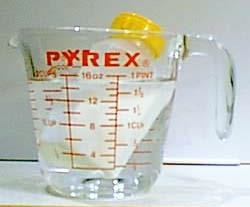Working mothers need special consideration while providing breastmilk for their infants. The American Academy of Pediatricians recommends babies be exclusively breastfed for six months, continuing for at least a year with the addition of solid foods. You can best assist the mother to maintain her milk supply for as long as possible by following a few simple tips.
Arrange for an introductory day prior to the mother’s return to work
Assist the mother to arrange a short day in the day care setting so the baby is introduced to his new care givers. The mother can use her breast pump and save her milk. Good for a trial run!
Provide a private place to breastfeed
Mothers often would like to breastfeed their babies just before leaving them with you, and then feed them immediately when they pick them up. It is a special way a breastfeeding mother can reconnect after a day at work.
Do not feed the baby within an hour or two prior to the mom’s arrival, so the baby will be hungry and she can enjoy this special time with the baby before beginning her trip home.
Handling pumped breastmilk
The ideal breastmilk for the baby (if not directly from mom) is fresh refrigerated. This milk is safe for 8 days in the refrigerator and for several months in the freezer.

Milk can be warmed to feeding temperature by placing it in a container of lukewarm water or a baby bottle warmer. It should never be heated higher than body temperature (about 98oF).
Milk can be thawed in a similar way, by placing the breastmilk in a container of lukewarm water. It will thaw in about 10 minutes. Never place breastmilk in a microwave. Precious nutrients can be lost and milk can be hotter than the bottle feels.
Milk can be thawed in a similar way, by placing the breastmilk in a container of lukewarm water. It will thaw in about 10 minutes. Never place breastmilk in a microwave. Precious nutrients can be lost and milk can be hotter than the bottle feels.
Breastmilk has a cream layer that will rise to the top of the container. That is a good sign that there are adequate calories in the milk. Warm it to feeding temperature and gently swirl the container to mix the cream into the milk. This will assure that the baby gets a balance of milk. Do not vigorously shake breastmilk; some of the protective cells can be damaged.
OSHA has determined that breastmilk is not a “hazardous substance” and does not require the wearing of protective gloves. However, some institutional policies do require the use of gloves when handling and wiping up spills of breastmilk.
Feeding the baby pumped breastmilk
It is ideal to make bottle feeding breastmilk as close as possible to feeding from the breast. That means pacing the feeding so it takes about 20-30 minutes for the newborn, shorter for the older baby. Sometimes babies get used to the “instant on” from a bottle and the fast flow and are reluctant to return to the breast. Paced bottle feeding allows the baby to be in control of bottle feeding as he is when breastfeeding. Hold the bottle nearly horizontal and hold the baby nearly upright to avoid the “instant on” and fast flow from the bottle.
Discuss the bottle nipple with the mother. Usually a slow flow nipple with a medium to wide base is best for breastfeeding babies less than a month or two old. Older infants can usually handle nipples with a faster flow.
Some breastfed babies will do fine with a slow flow nipple for as long as they are bottle fed. Observe the baby for signs that the flow is too fast or to slow.
Some breastfed babies will do fine with a slow flow nipple for as long as they are bottle fed. Observe the baby for signs that the flow is too fast or to slow.
 The flow is too fast for this baby.
The flow is too fast for this baby.Note his stressed look,
raised shoulders and clenched fists.
-Too fast flow-
Agitation and grimacing
Agitation and grimacing
Gasping for air
Taking frequent breaks
Taking frequent breaks
Panicked look in the eyes
Milk running out corners of mouth
Coughing or sputtering
Coughing or sputtering
Flailing arms
Pushing the bottle away
Pushing the bottle away
Appearance of a breastfed infant’s stools
Stools of a breastfed baby are usually mustardy yellow and semi-liquid. They may contain lumps. Newborns often stool with each feeding. This is not diarrhea. Older infants may go for several days without a stool and that can be a normal pattern.
When they do go it will be a big volume and soft. If the baby is receiving both breastmilk and formula, stools may be firmer and brownish. Solid dry stools in a breastfed baby should be reported to the physician for further evaluation
Feeding solid foods
The breastfeeding mother may want the baby to be fed his solid foods (after six months) at the day care setting. That way she can exclusively breastfeed during her hours off work. This will help her maintain her breastmilk supply.

